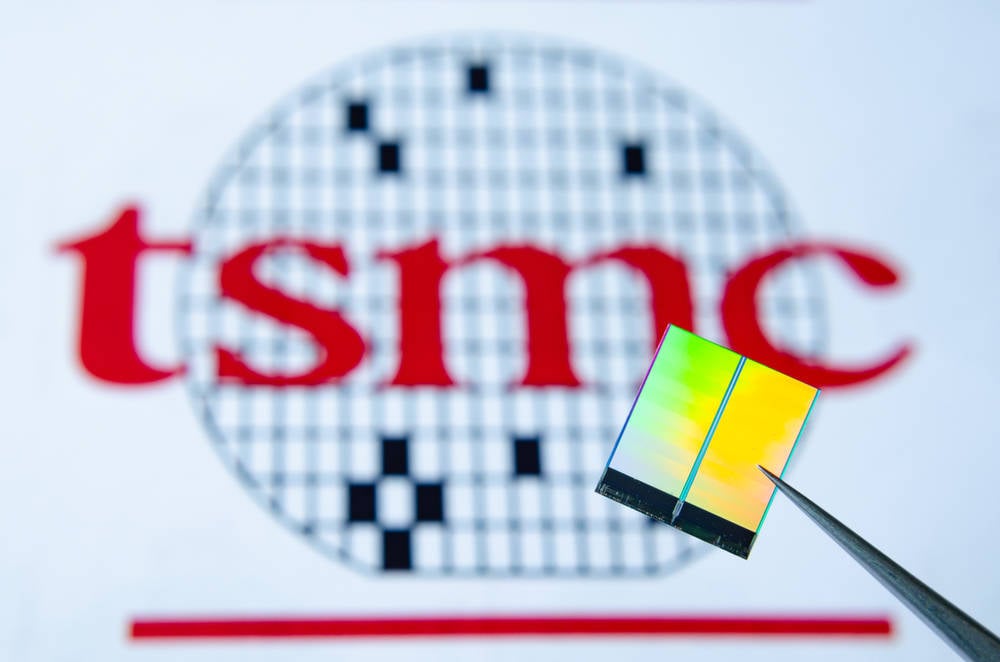Climate Agenda Slips At TSMC, Greenpeace Says

Greenpeace and several other climate organizations have singled out TSMC for criticism, saying the world's largest semiconductor contract manufacturer needs to do more to reduce “its massive carbon footprint”.
The trio have created a website, "Time to Chip In", which makes a number of claims about TSMC, including that the company has “fallen behind its peers” in the fight against climate change.
TSMC is the second largest consumer of power globally in terms of technology companies and is on course to account for over 12 percent of Taiwan’s energy supply, they claim.
Another accusation is that TSMC’s carbon dioxide emissions went up 17.5 percent between 2019 and 2021, yet only 9 percent of its energy comes from renewable sources, compared with 20 percent for Samsung and 82 percent for Intel.
Taiwan dominates the global semiconductor market, with figures from 2022 indicating it makes up 48 percent of the foundry market and 61 per cent of the capacity to manufacture at 16nm process nodes or anything more advanced.
The other two climate organizations involved in Time to Chip In are Stand.earth and 350.org Asia.
TSMC is currently expanding its facilities outside Taiwan to new semiconductor fabrication plants being constructed in Japan and the US, but this expansion is increasing demand for fossil fuels, according to the climate organizations. “TSMC, the world’s largest chipmaker, supplies semiconductors for everything from iPhones to automobiles,” Greenpeace East Asia deputy executive director Jude Lee said in a statement.
“However, as the company expands globally, its emissions are rising unchecked and now rival those of a small country,” Lee claimed, adding that the chip giant’s “continued reliance on coal and other fossil fuels” stands in contrast to the company’s future-oriented public image.
Greenpeace said TSMC has the potential to purchase and install rooftop solar, calling on the company to aim for 100 percent renewable energy worldwide by 2030 and set out a clear roadmap for achieving this goal.
TSMC did set out plans recently to source electricity from solar power. Last month, it announced a partnership with ARK Power for 20,000 gigawatt-hours of electricity, however, as The Register reported at the time, this is for 1,000 gigawatt-hours per year over a 20-year period, which makes it seem a little like greenwashing.
Stand.earth’s Global Climate Campaigns Director Gary Cook said in a statement that TSMC’s clients such as Apple and Microsoft have made net-zero commitments across their supply chains, and TSMC was going against the efforts of those customers if it continues with a “business as usual” approach.
350.org Asia Regional Director Norly Mercado said: “The just energy transition is going to require both the public and private sector to start putting actions where their promises are,” and to live up to its claims of environmental leadership, “TSMC should invest actively and directly in 100 percent just and equitable renewable energy.”
Industry-wide issue
But is it fair to single out TSMC in this way? This report follows one that Greenpeace published last month which forecast that the semiconductor industry as a whole is set to more than double its electricity consumption by 2030, to 286 terawatt hours (TWh).
The same report said carbon dioxide emissions by Samsung Electronics will exceed 32 million tonnes by the same time, more than the total emissions of Denmark in 2021. Sammy, it said, had not issued a 2030 climate commitment for operations in its home territory of South Korea.
- TSMC and pals dream of €10B German chip fab
- Now you've all quit buying RAM and personal gear, chip wafer demand stumbles
- US chipmakers don't want to be locked out of industry's biggest market: China
- Will Arm make and sell its own processors? We're gonna go with no
Greenpeace added that no major semiconductor manufacturer, display manufacturer, or final assembly company had so far made climate commitments that are compatible with limiting global heating to within 1.5°C (2.7°C) by 2030.
Gartner vice president for Semiconductors & Electronics Richard Gordon told us that TSMC already has some plans in place to lower its carbon footprint, saying this looks like an opportunistic attack by Greenpeace.
“Very few of the general public understand the semiconductor industry and how practical it would be to transition to 100 percent renewables by 2030, because it isn’t,” he commented.
We asked TSMC for its response to the claims made by the climate organizations, but the company did not immediately respond. ®
From Chip War To Cloud War: The Next Frontier In Global Tech Competition
The global chip war, characterized by intense competition among nations and corporations for supremacy in semiconductor ... Read more
The High Stakes Of Tech Regulation: Security Risks And Market Dynamics
The influence of tech giants in the global economy continues to grow, raising crucial questions about how to balance sec... Read more
The Tyranny Of Instagram Interiors: Why It's Time To Break Free From Algorithm-Driven Aesthetics
Instagram has become a dominant force in shaping interior design trends, offering a seemingly endless stream of inspirat... Read more
The Data Crunch In AI: Strategies For Sustainability
Exploring solutions to the imminent exhaustion of internet data for AI training.As the artificial intelligence (AI) indu... Read more
Google Abandons Four-Year Effort To Remove Cookies From Chrome Browser
After four years of dedicated effort, Google has decided to abandon its plan to remove third-party cookies from its Chro... Read more
LinkedIn Embraces AI And Gamification To Drive User Engagement And Revenue
In an effort to tackle slowing revenue growth and enhance user engagement, LinkedIn is turning to artificial intelligenc... Read more

